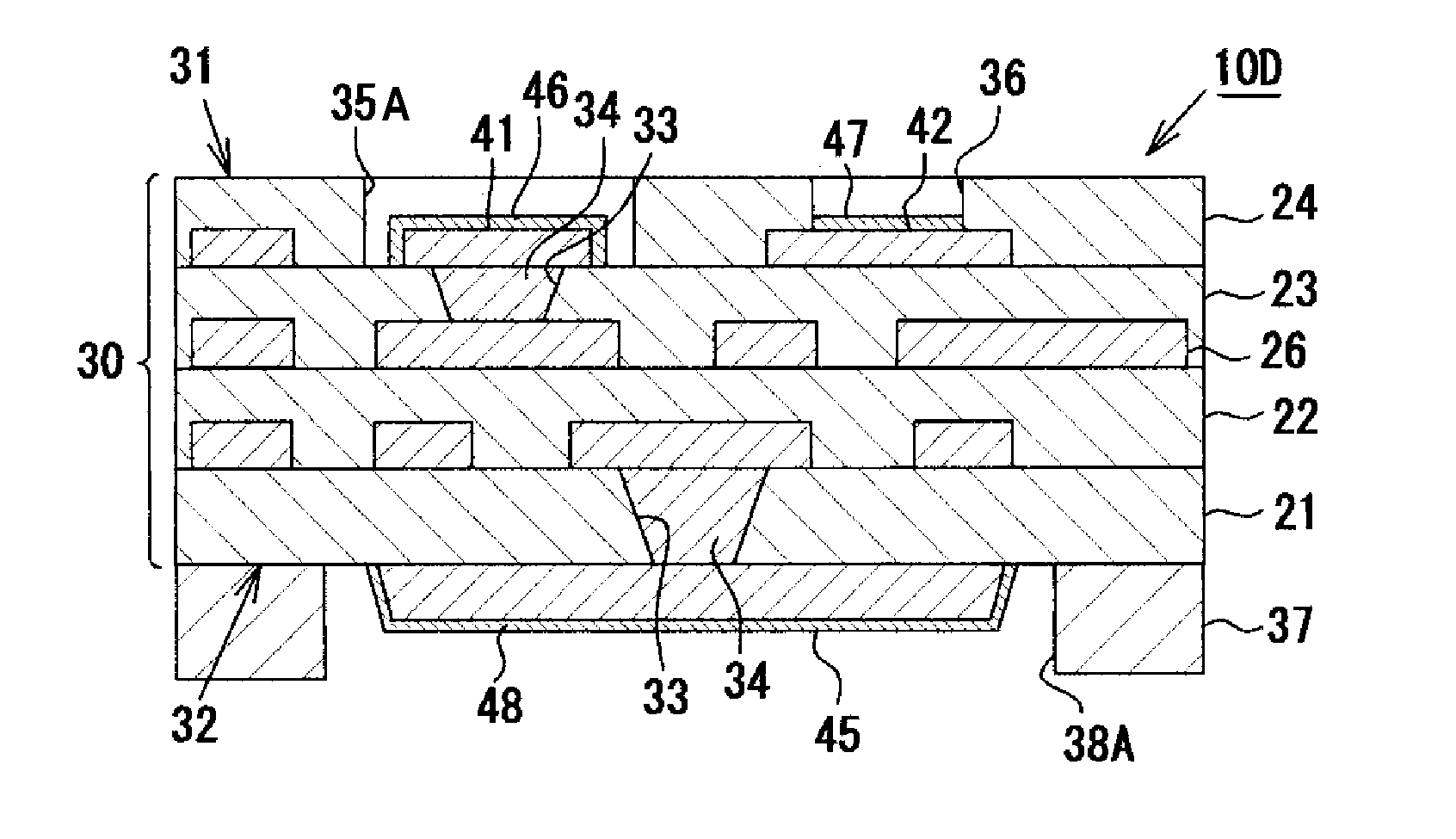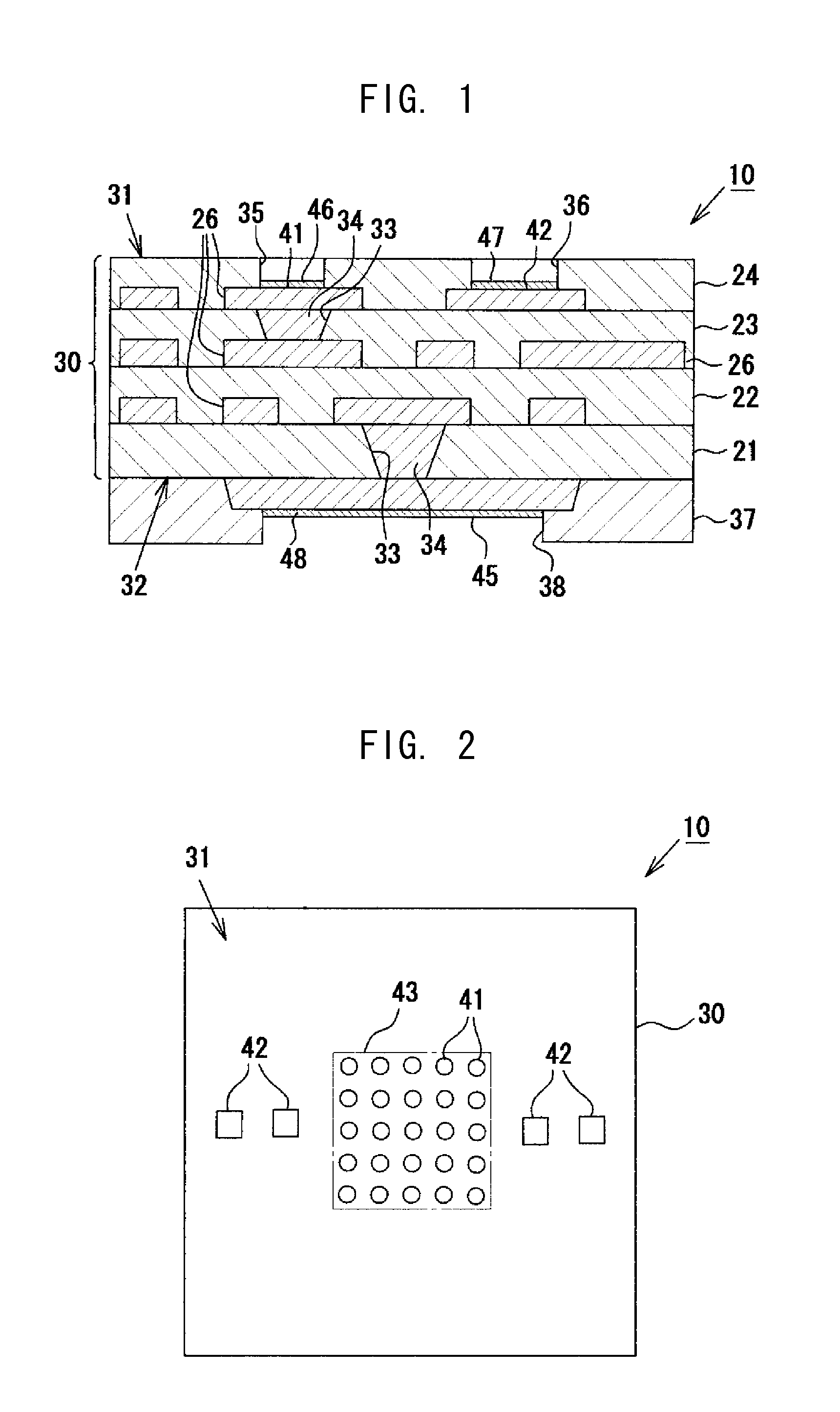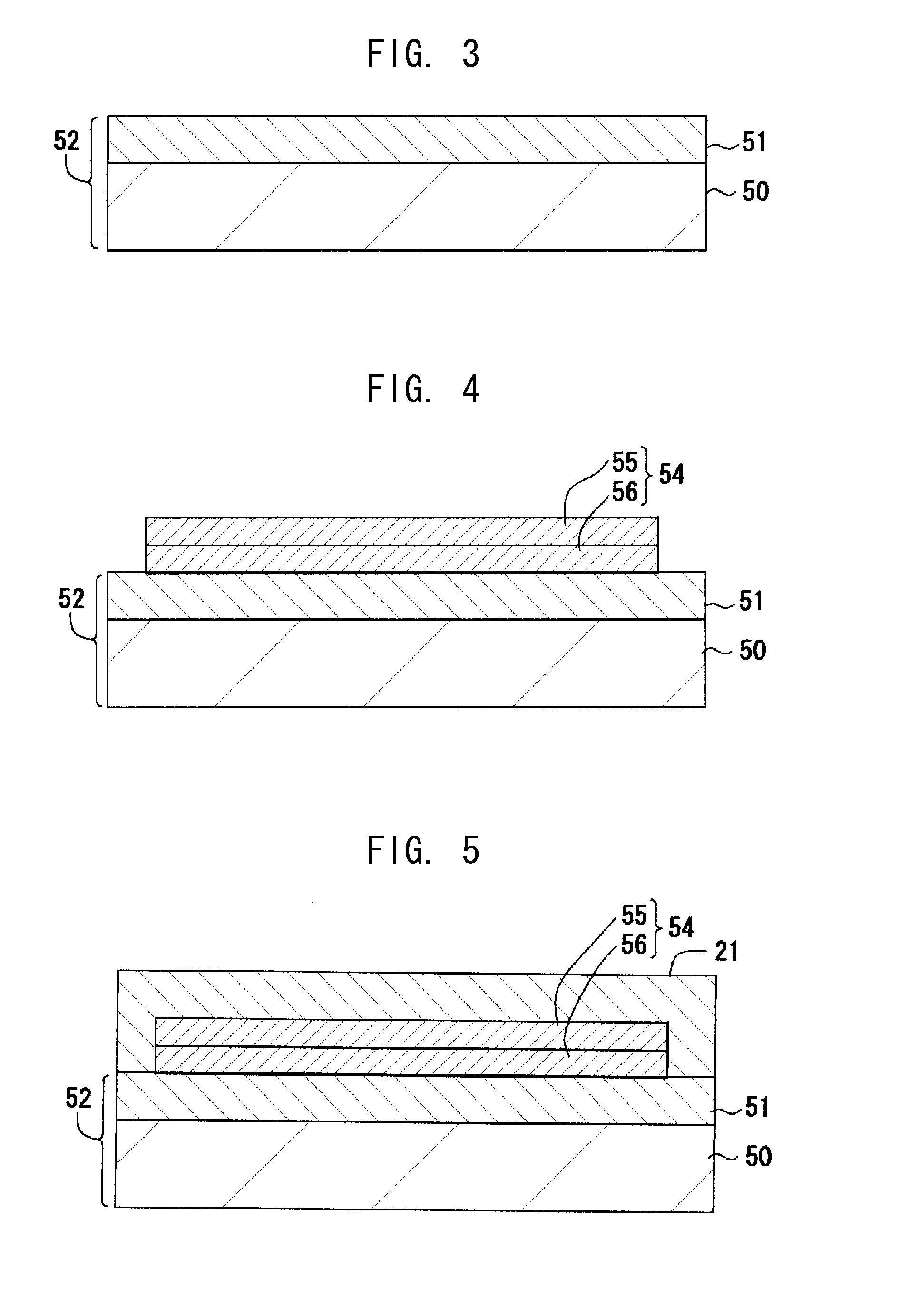Method of Manufacturing Multilayer Wiring Substrate, and Multilayer Wiring Substrate
a manufacturing method and wiring technology, applied in the direction of printed circuit manufacturing, printed circuit aspects, conductive pattern formation, etc., can solve the problems of reducing difficulty in setting the degree of surface roughness of the multi-layer wiring substrate to a proper level, and deterioration of the flowability of the underfill agent, etc., to achieve a reduction of the coefficient of thermal expansion, reduce the difficulty of reducing the surface roughness of the multi-layer wiring
- Summary
- Abstract
- Description
- Claims
- Application Information
AI Technical Summary
Benefits of technology
Problems solved by technology
Method used
Image
Examples
first embodiment
[0043]A multilayer wiring substrate according to a first embodiment of the present invention will next be described in detail with reference to the drawings. FIG. 1 is an enlarged sectional view schematically showing the structure of the multilayer wiring substrate of the present embodiment. FIG. 2 is a plan view of the multilayer wiring substrate.
[0044]As shown in FIG. 1, a multilayer wiring substrate 10 is a coreless wiring substrate having no substrate core and has a multilayer wiring laminate portion 30 (laminate structure) in which four resin insulation layers 21, 22, 23, and 24 made primarily of the same resin insulation material, and conductive layers 26 made of copper are laminated alternately. The resin insulation layers 21 to 24 are formed of a build-up material made primarily of a hardened resin insulation material that is not photocurable; specifically, a hardened thermosetting epoxy resin. In the multilayer wiring substrate 10, a plurality of connection terminals 41 and...
second embodiment
[0067]Next, a second embodiment of the present invention will be described with reference to the drawings. The present embodiment differs from the first embodiment in the method of manufacturing the multilayer wiring substrate 10.
[0068]In the present embodiment as well, as in the first embodiment, a build-up step is first performed so as to form the wiring laminate 60 in which the metal laminate sheet 54, the resin insulation layers 21 to 24, and the conductive layers 26 are laminated on the base material 52 (see FIG. 8).
[0069]After that, the wiring laminate 60 is cut by a dicing apparatus (not shown) so as to remove a surrounding portion around the wiring laminate portion 30 (cutting step). Subsequently, as shown in FIG. 13, the wiring laminate portion 30 and the base material 52 are separated from each other at the interface between the copper foils 55 and 56 of the metal laminate sheet 54, thereby removing the base material 52 from the wiring laminate portion 30 and exposing the ...
PUM
| Property | Measurement | Unit |
|---|---|---|
| Electrical conductor | aaaaa | aaaaa |
| Height | aaaaa | aaaaa |
Abstract
Description
Claims
Application Information
 Login to View More
Login to View More - R&D
- Intellectual Property
- Life Sciences
- Materials
- Tech Scout
- Unparalleled Data Quality
- Higher Quality Content
- 60% Fewer Hallucinations
Browse by: Latest US Patents, China's latest patents, Technical Efficacy Thesaurus, Application Domain, Technology Topic, Popular Technical Reports.
© 2025 PatSnap. All rights reserved.Legal|Privacy policy|Modern Slavery Act Transparency Statement|Sitemap|About US| Contact US: help@patsnap.com



